Every so often, we do a review and find a surprising nugget of information that we may have missed otherwise. Indeed, in our Intel Xeon Gold 6240R benchmarks and review piece we found a SKU that is a better value than when it was first announced due to a list price discount happening at some point. Let us look at that discount, and what that means to its competitive positioning.
Intel Xeon Gold 6240R Overview
The Xeon Gold 6240R most closely resembles the Intel Xeon Platinum 8260. What is interesting is that the Platinum 8260 we featured twice on STH. In our Intel Xeon Platinum 8260 Benchmarks and Review piece, we used a quad-socket node. We also used the Platinum 8260L in our Performance Check to validate that there was no difference between the standard Xeon Platinum SKU and the L model in terms of performance. As a fun aside, the Intel Xeon Gold 6240R is a 2x UPI link chip so it does not fit in the quad-socket scenario. It is also a standard memory part, so it does not fit in the high-memory scenario.
Key stats for the Intel Xeon Gold 6240R: 24 cores / 48 threads with a 2.4GHz base clock and 4.0GHz turbo boost. There is 35.75MB of onboard L3 cache. The CPU features a 165W TDP. These are $2200 list price parts. If you want to see more on the spec side, here is the ARK page for these CPUs.
Here is the lscpu output for the Intel Xeon Gold 6240R:
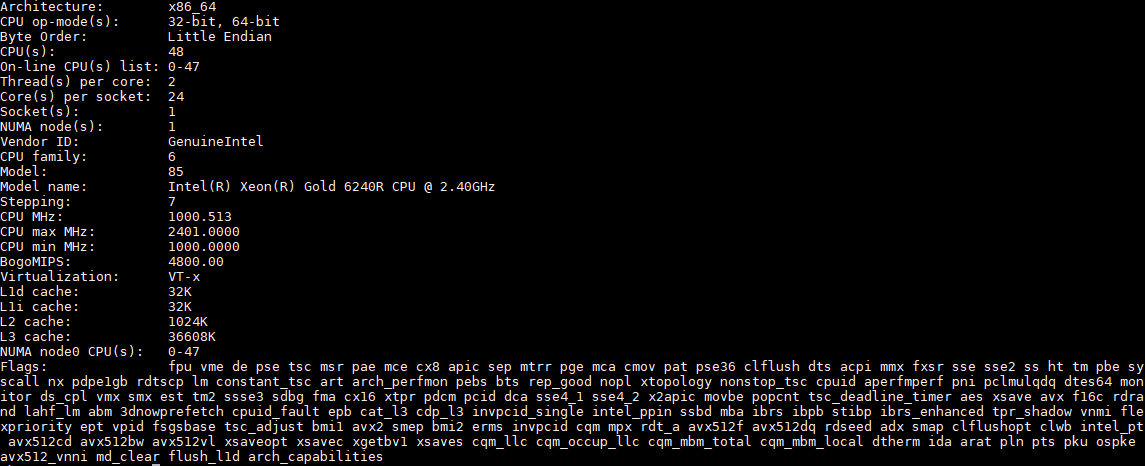
Somewhere between when Intel issued us launch pricing for the refresh, and this review going live, Intel seems to have decreased the list price. In our Big 2nd Gen Intel Xeon Scalable Refresh Brings Competition Anew piece we had the figure from Intel as $2445 for the Xeon Gold 6240R. We double-checked other coverage from that time period and that is what others recorded as well about eight months ago. Now, the list price is $2200.
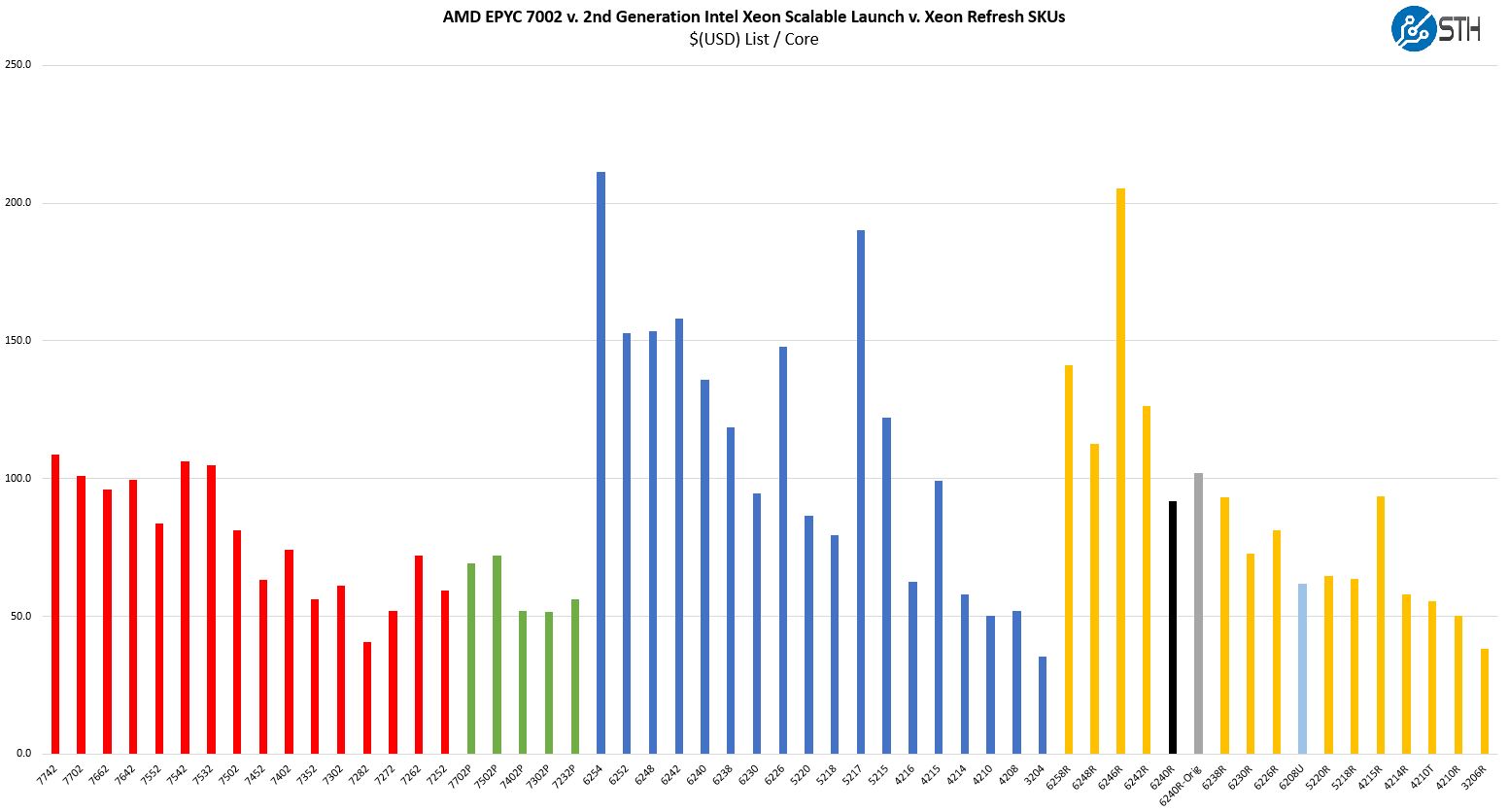
As one can see on the right side of our comparison chart, taking a 24-core CPU and lowering the price by $245 means we effectively get a roughly $10/ core or a 10% discount in this case. We are going to talk more about market dynamics in the market analysis section of this review. The key takeaway is that this 10% discount makes the price per core more inline with AMD competition. We will also note the Xeon Platinum 8260 that this is effectively replacing in the mainstream dual-socket market is $4702. With the new pricing, we are getting a discount of around 53% off of what we had nine months prior to this review.
We mentioned the lack of the quad-socket capability for the Gold 6240R versus the Platinum 8260, but there is a dual-socket impact as well. The lack of the third UPI channel means that in dual-socket configurations the Xeon Gold 6240R has a 2x UPI link connection for socket-to-socket communication. A Xeon Platinum 8260 can have up to 3x UPI links. Enabling those three UPI links uses more power and increases trace count/ complexity in a motherboard. As a result, not all systems support this feature and that is why we noted it in our Supermicro BigTwin SYS-2029BZ-HNR Review.
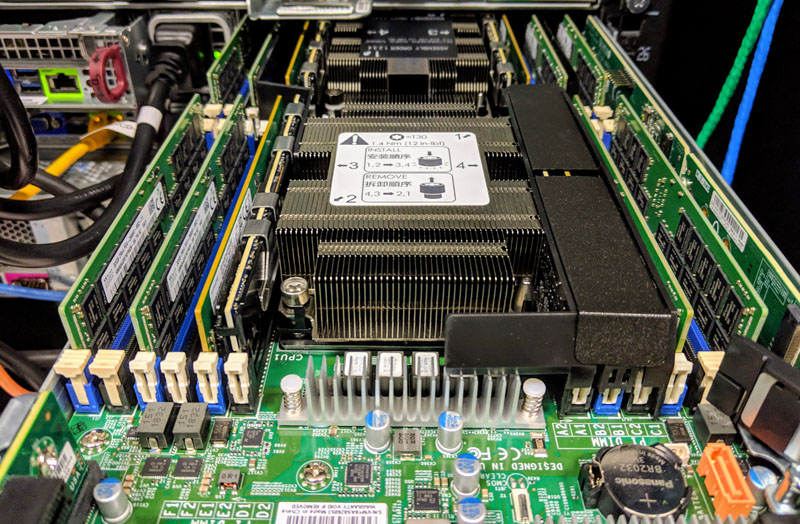
Not all systems are designed for a 3x UPI link in a dual-socket configuration, especially since this adds costs. In some markets such as for hyper-converged servers as it adds ~50% more socket-to-socket capacity. As a 165W part, this is likely less of a concern than with the higher wattage 205W TDP parts.
In our benchmarks, we are going to investigate the performance impact. First, we are going to take a look at the test configurations then get into details.
Intel Xeon Gold 6240R Test Configuration
We are using a testbed that is designed for the higher-205W TDPs that some of the new refresh parts can hit, specifically the Supermicro SYS-2029UZ-TN20R25M or “2029UZ-TN20R25M” server. We published our Supermicro 2029UZ-TN20R25M Review recently if you want an in-depth look at the machine.
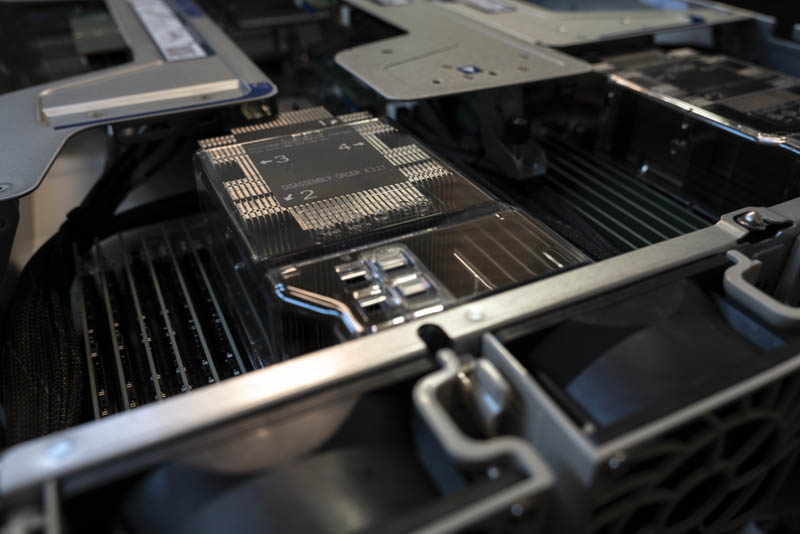
The Supermicro 2029UZ-TN20R25M is a 2U dual-socket server that is part of the company’s “Ultra” line meant to compete in the higher-end of the server market. We requested this server specifically because it has 20x NVMe SSD bays, it supports Intel Optane DCPMM, and it has built-in 25GbE. 25GbE is a major networking trend and we have already started doing overviews of 25GbE TOR switches such as the Ubiquiti UniFi USW-Leaf 48x 25GbE and 6x 100GbE switch overview and the Edgecore AS7712-32X Switch Overview. We have done adapter reviews such as the Supermicro AOC-S25G-i2S, Dell EMC 4GMN7 Broadcom 57404, and the Mellanox ConnectX-4 Lx. We also have more 100GbE switch reviews in the publishing queue so we wanted to start focusing on the new systems.
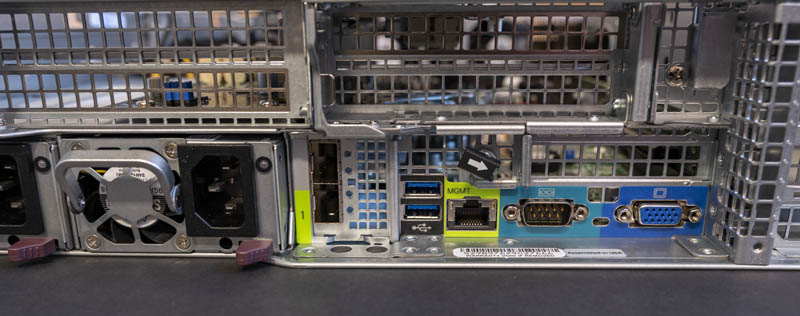
This Supermicro 2029UZ-TN20R25M platform is significant for another reason. It supports 205W TDP CPUs. That is a feature not every dual Xeon server has. For this reason, we wanted to use the Supermicro 2029UZ-TN20R25M which is a higher-end platform capable of handling this range of refresh CPUs. We do not need it for lower TDP SKUs like the Xeon Gold 6240R, but for higher-end SKUs we do. Here is the basic configuration:
- System: Supermicro 2029UZ-TN20R25M
- Memory: 12x 32GB DDR4-2933 DDR4 DRAM
- OS SSD: 1x Intel DC S3710 400GB Boot
- NVMe SSDs: 4x Intel DC P4510 2TB
Overall, this is a fairly simple configuration, but we are focused on CPU performance here. We are taking a further step and we tested these CPUs both in single and dual-socket configurations, so we will have some results of both views. The Supermicro Ultra server we are using we recommend using only in dual-socket configurations, however, we thought this would be a good way to spice the review up.
Next, let us get to performance before moving on to our market analysis section.





At least someone is being honest. Thanks John. It’s nice not reading crazy fluffs.
I don’t know, green looks pretty sus to me…
Dear Patrick,
I recently read intel divested their infiniband competitor to a enthusiastic new owner and I still cannot ever remember what it’s called from the first pressers till today and I’m going back of random imaginary network company show booths banging my drum about Cray Slingshot “take my money “ is the only thing my deranged avatar demands.
Also Fungible needs one expansion slot for my P4 accelerator in which they only need to offer their own cards so long as I get a good quantity of hard cores for P4 ASTs and FORTH like variable registers and optional hard core chessboards (my conception of a nobody in this domain it merely helps me remember the freedom of movement in chess is a good principle for FPGA resource allocation… incidentally I’m convinced that this field is being taught very badly I mean actively contributing to failures in the industry almost as if a spiteful or afraid market participant had been able to infuse all of academia and the entire FPGA world with sabotaging subtle misunderstandings
I believe you are thinking of (formerly) Intel Omni-Path.